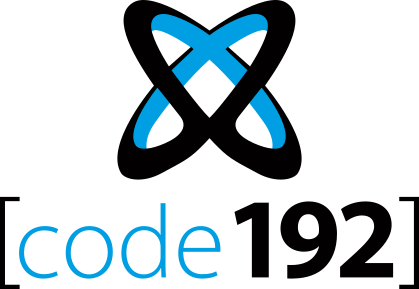Introduction : limits of applicability
This procedure only applies if you are upgrading from Alpana Server version number starting with v2
Dashboards migration
Notice of incompatibility
Due to internal changes for supporting new features, two component from previous v2.0.8.x cannot be migrated natively : Wonderware Historian Connections, and CSV Connections.
If your v2 Dashboards contain Wonderware Historian Connections or CSV Connections, you will have to re-create them manually.
File format difference
Dashboards from Alpana v3.0.1.x use a file format with extension *.alpd which is a different format from previous v2.0.8.x versions with extension *.sydx
To migrate a dashboard file, please follow the below procedure.
Alpana Server installation migration
Notice of incompatibility
Due to deep internal changes for supporting new features and improving the product, Alpana Server installations from v2.0.8.x cannot be migrated natively.
In order to upgrade Alpana Server installations from v2 (v2.0.8.12 and before) to v3.0 (up to v3.0.1.1 at least), you will need to perform manual steps :
- upgrade Dashboards to v3.0
- backup v2.0 installation
- un-install v2.0
- install and configure v3.0
- publish dashboards and re-create users, categories, schedules
Please see below for advice and more details.
New licensing
Upgrading from v2.0 requires to generate a new compatible license key.
Please make sure before upgrading that you will have a compatible license for the new version.
General advice
You should keep your v2.0 installation running as long as possible in order to be able to view the old configuration at any time. You should wait to have re-created your dashboards before deploying v3.0 fully, in order to ensure continuity of service.
Dashboards can be migrated using Alpana Designer only, by following the above procedure.
1 – Upgrade Dashboards
To upgrade a file dashboard_v2.sydx :
- rename the file with extension
*.alpd, for exampledashboard_v2.alpd(*) - open the file in Alpana Designer
- check that migration happened correctly, make any fix necessary, or take advantage of new features
- save the dashboard with a new name : for example
dashboard_v3.alpd
Other files upgrade procedure
Other files are migrated with the same procedure as above, just replace the correct file extension names :
- Dashboards :
*.sydxbecomes*.alpd - Widgets :
*.sydwbecomes*.alpw - Data Sources :
*.sydsbecomes*.alps
2 – Backup v2.0 installation
backup
Perform a complete backup of your v2.0 installation :
- archive the complete folder
C:\code192\Alpana Server\Server.Web\App_Data\ - archive the Alpana Server database you configured when installing v2. You can find its name by using
C:\code192\Alpana Server\Utilities\ConnectionStringEditor\ConnectionStringEditor.exe
prepare user import
If you have many users to re-create, you can export the list as CSV from v2 : In the Alpana Server database, export the content of the [ALP_User] table as CSV.
prepare website binding
In IIS (inetmgr), take a note of the current bindings for your Alpana website : port number, name, …
prepare configuration
In Alpana Server web portal, go to the administration pages (at “http://yoursite/en-us/administration”) and take a note of all configuration to re-create :
- site URL
- branding
- e-mail settings
- AD settings
List other items
If there are other items to re-create from Server, list them :
- Categories
- Schedules
- published Dashboards/Widgets/DataSources
3 – Uninstall v2.0
The best workflow is to leave v2.0 installed as long as possible and deploy v3.0 on a different machine. This way, you can ensure that the migrated platform will behave as expected. For this workflow, you can delay the un-install of v2.0 to a later step.
However, if you need to install Alpana v3.0 on the same machine as the current v2.0, you will need to uninstall v2.0 first.
uninstall Dashboard Designer
From Windows Control Panel, uninstall “code192 Dashboard Designer”
uninstall Dashboard Server
- Make sure that you have backups
- From Windows Control Panel, uninstall “code192 Dashboard Server”
- During uninstallation, select to uninstall license, and select to “Remove resources and drop the database”. WARNING : At this step, you will lose your v2.0 dashboards and configuration if you didn’t make backups.
- in Windows services.msc , make sure that the Service “Code192 Dashboard Server Scheduler” is well un-installed
Clean up
Services
If a service didn’t uninstall properly, you can follow the following Windows procedure :
- get the Service name from services.msc, for example
Code192 Dashboard Server Scheduler - Open a command prompt with administrative rights
- stop the service using the command
SC STOPfor example :SC STOP Code192 Dashboard Server Scheduler - delete the service using the command
SC DELETEfor example :SC DELETE "Code192 Dashboard Server Scheduler"
Folders
Unless you have other [code192] products installed, make sure that there are no more code192 folders inside :C:\Program Files (x86)\C:\ProgramData\C:\ root directory
4 – Install and configure v3.0
Installation
- Check the new pre-requisites for Alpana v3.0. In particular, there is new software pre-requisites and a more recent version of .NET Framework required.
- Follow installation instructions to install Alpana v3.0 Server and Designer.
- When installing Alpana Server, install with the appropriate port
configure Alpana Server
In Alpana Server web portal, go to the administration pages and restore all the configuration needed :
- site URL
- branding
- e-mail settings
- AD settings
5 – Publish dashboards and re-create users, categories, schedules
In your new fresh install of Alpana Server v3.0, you will need to re-create items as backed-up previously :
create Categories
- Create the Categories needed. You can make use of v3.0 new feature of Categories contained under other Categories
Publish items
- Publish the validated Dashboards/Widgets/DataSources
Update Links
- Dashboards URL have a different format, so Links To URL between Dashboards need to be updated.
give access to users
- re-create Roles for users
- re-create Users. If you have many users, you can make use of the [ALP_User] table you exported as CSV from v2, and use New User > Import from CSV.
- assign permissions for Roles and Users to Dashboards and other items



Post your comment on this topic.